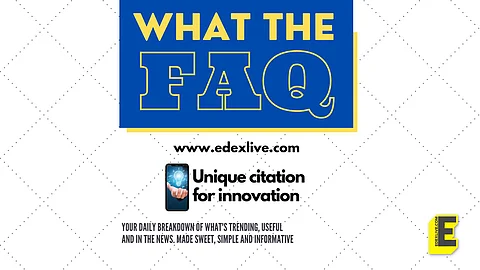

Innovation leads to advancement and leading the charge are India's youngsters. So doesn't it make sense to ensure that the higher educational institutions (HEIs), where these youngsters learn to grow and innovate, focus on this vital aspect? Entre the Atal Ranking of Institutions on Innovation Achievements (ARIIA) 2021, which was released on December 29, 2021.
But how does one measure something as intangible, yet tangible, as innovation? What are the frameworks, parameters, timelines and so on? Have these questions been bugging you too? We break it down for you.
So, first and foremost, when was the ARIIA launched and by whom?
It was in the year 2018 that the Ministry of Human Resource Development, Government of India introduced ARIIA so that higher education institutions can be ranked on indicators that are focussed more on innovation. It is implemented through AICTE (All India Council for Technical Education) and Ministry of Education's Innovation Cell. This was because it is these institutions that play a major role when it comes to developing and expanding an innovation ecosystem that is sustainable. It is to ensure that educational institutions remember that innovation is a major factor. Within five years, it hopes to see India in the top 50 list of the Global Innovation Index.
Is there anything special about this ARIIA?
The first edition of ARIIA was started in 2019 and as many as 496 institutes were competing. In ARIIA 2020, 674 institutes participated. As many as 3551 HEIs registered this time, out of which, 1438 institutions (IITs, NITs and so on) participated. This is double of what was in the second edition and four times more than what was in the first edition. Also, for non-technical institutions this time, a special framework has been introduced that hopes to build further the innovation and entrepreneurship ecosystem. Also, a special prize category for women only higher educational institutions has been announced for the first time.
What are the various categories that the participating HEIs are classified in?
All HEIs are classified under two major categories:
- Technical HEI
- Non-Technical HEI
Furthermore, the technical category has five sub-categories:
- Centrally Funded Technical Institutions (CFTIs), central university and Institute of National Importance
- State university and deemed university (government and government aided)
- Government college/institution (government and government aided)
- University and university (government and government aided)
- Private college/institute (self-financed/private)
The non-technical category has two sub-categories:
- Centre For Innovation (CFI)/Central university/Institute of National Importance (non-technical)
- General (non-technical)
What is the assessment process?
The HEIs need to register via the ARIIA portal (ariia.gov.in) and complete the pre-qualifier section before they get started on data submission. All those applications that were submitted went through screening, validation and evaluation stages as per the frameworks and guidelines that have been agreed upon by the evaluation committee. As per the score and range achieved for the parameters, sub-parameters and category-wise score, the ranks are prepared.
What are the frameworks/parameters?
A few of them are summarised as follows:
- Through various activities, nurturing an innovative and entrepreneurial mindset
- Courses on innovation, entrepreneurship and IPR to be taught and learnt
- Infrastructure and facilities dedicated to innovation and entrepreneurial
- Developing successful start-ups
- Intellectual Property (IP), generation and commercilisation
- Annual budget on promoting and supporting these activities
- Participation in innovation and entrepreneurship activities initiatives by the Ministry of Education
What are the highlights of this year?
IIT Madras has emerged as the most innovative institutions in the country; Punjab University was ranked number one among government technical universities; College of Engineering, Pune took the number one spot in the government-aided technical colleges' category; when it comes to private technical institutes, Kalinga Institute of Industrial Technology (KIIT) was awarded as the best and Indira Gandhi National Open University (IGNOU) is the best among non-technical Institutes of National Importance and CFIs.
